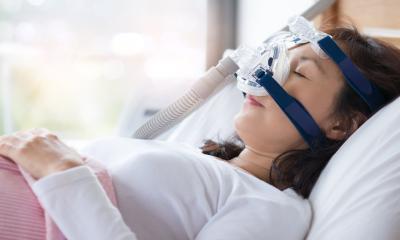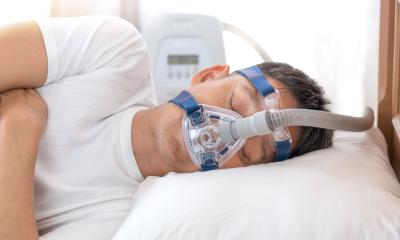Faster weaning enhances patient care
SmartCare, a software solution from Dräger Medical could cut the time of a weaning process by around 50%.

Intensive care specialist Dr Philippe Jolliet, a senior member of the medical staff of the Medical Intensive Care Unit (MICU) at Geneva’s University Hospitals, recently participated - along with a dozen other physicians in European hospitals - in the multicentre, randomised, controlled study ‘Computer-driven ventilation reduces duration of weaning’. This involved the use of the software SmartCare, introduced at Medica 2004 by Dräger Medical.
Dr Jolliet has reported that he was not surprised when the results of the 12-month study into the benefits of using SmartCare software on the hospital’s EvitaXL critical care ventilators indicated a reduction in weaning time. However, he said: ‘Even I was shocked by the results. On average, we had cut the time between starting and completing the weaning process by around 50%. If we achieve this while maintaining patients in a pathophysiological comfort zone, and reduce the period when they are most at risk of contracting a nosocomial infection, this has to be a major benefit. Furthermore, if we can constantly tailor the exact level of pressure support to their exact needs, it will reduce the discomfort associated with intubation and assisted ventilation.’
Dr Jolliet also observed that cutting time spent on the ventilator usually reduces the total length of stay in an ICU. The software could also ‘... help with planning elective procedures if we can be more confident when beds will become free for post-operative recovery’, he added.
However, Dr Jolliet said that not all cases need weaning via software use. ‘Some only need to be intubated and ventilated for a very short period prior to a natural and speedy recovery and transfer out of the ICU. Others, because of the severity of their disease, associated conditions, and additional complications, such as infection, may need to spend three weeks or more on a ventilator, and thereafter be very difficult to wean. I feel SmartCare would be inappropriate for both patient categories. However, there is a large ICU patient population that falls between these two ends of the spectrum, who I would describe as being either average of moderately difficult to wean. I believe these patients would benefit considerably from the use of SmartCare.’
Asked whether equivalent results could have been achieved using his previous weaning methods, Dr Jolliet replied: ‘We employed a protocol-driven system, and posted the details all around the ICU. It worked well, but relied on nurses following it to the letter. Unfortunately, as patients’ conditions improve, they tend to draw less attention to themselves - there are always plenty of others to distract the nurses - so it was not unusual for certain checks to be missed. This could lead to a missed opportunity to alter the settings and potentially shorten the weaning time.’ SmartCare, he observed, represents a ‘real world’ approach to protocol-driven weaning. ‘It is, after all, based on the pooled clinical experience of some of the world’s leading intensivists and pathophysiologists!’ he exclaimed. Using the software means the EvitaXL ventilators can be left to control the process, providing medical teams with more time to patient care and other tasks, he pointed out, adding that some of the nurses had joked that the system would leave them with nothing left to do. Significantly, the nurses had reported finding the software easy to follow, despite early on blaming any complications they experienced on that same software.
In addition to weaning, Dr Jolliet said he saw a potential for elements of the software to be used within non-invasive ventilation, where its ability to titrate the exact level of pressure support required might lead to far more patient comfort.
In summary he compared the software with an autopilot on an aircraft. 95% of the time, he said, it could do a good job, but it could not quite replace the hands-on approach needed when landing in lashing rain with a strong side wind. So, he quipped, he and his colleagues would not start to look for careers beyond the ICU: ‘Many aspects of patient care will always need the human touch.’
23.05.2006





